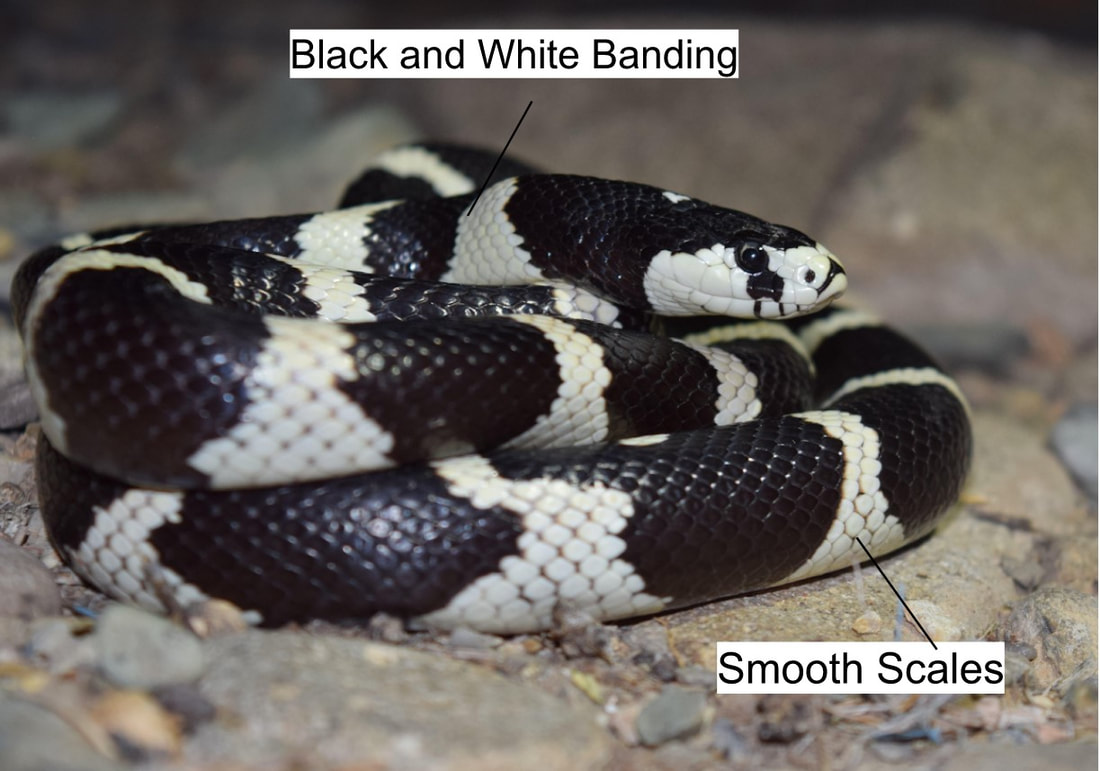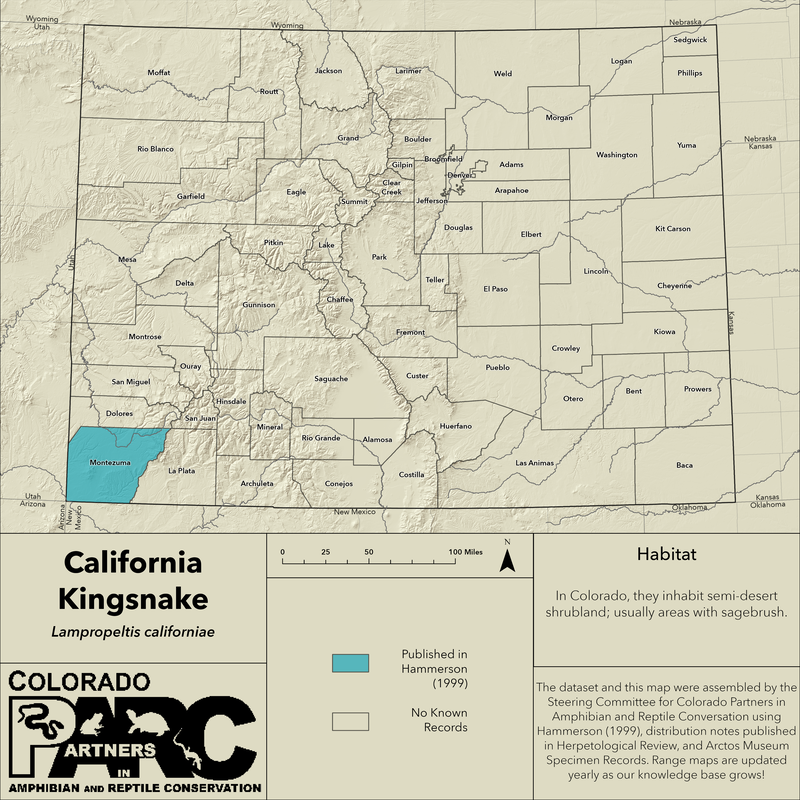|
Identification:
- Length: average size of 3-4 feet (91.5-122 cm) but in some parts of their range they can become larger. - Black and white banding covers the whole snake - Smooth scales (Hammerson 1999) Distribution: This species range in Colorado is very small, having only been documented in the far western edges of Montezuma County in the southwestern corner of the state (with no future range extensions expected).
(Hammerson 1999) Activity: Their activity is recorded during the months of May through September typically coinciding with moisture events. They will hibernate from October through April underground or in deep rock outcrops. Temperature and humidity will affect the behavior with activity increasing with most precipitation, and typically being diurnal during lower day-time temperatures and nocturnal or crepuscular when day-time temperatures are hot and dry. (Hammerson 1999)
Conservation Status: The species is listed as Critically Imperiled by CNHP and is a Tier 2 Species according to Colorado Parks & Wildlife. It is abundant throughout most of its range but in Colorado it is uncommon.
NatureServe rank: G5 (Globally Secure), S1 (State Critically Imperiled). |
Habitat: In Colorado they inhabit semi-desert shrubland, usually areas with sage brush. (Hammerson 1999)
Diet: Adults' diets may consist of rodents, birds, bird eggs, snakes, lizards, amphibians, and reptile eggs. Juvenile diets consist of smaller lizards, snakes, and young rodents.
(Hammerson 1999) Defense: As defense they can use secretions from the cloaca to cover themselves or spray it at predators. These secretions smell unpleasant and can be effective against predators. (Hammerson 1999)
Natural Predators: Predators include birds of prey, bobcats, large rodents, other snakes, and omnivorous mammals (Hammerson 1999)
|
Cited & Additional Resources
Hammerson G. A. 1999. Amphibians and Reptiles in Colorado. University Press Colorado, Boulder.
Hammerson G. A. 1999. Amphibians and Reptiles in Colorado. University Press Colorado, Boulder.
Account compiled by: Brendan Hettinger
Reviewed by:
Last Updated: 1/19/2023 by Anthony Berardi
Reviewed by:
Last Updated: 1/19/2023 by Anthony Berardi



